Southwest Michigan field crops update – August 28, 2025
White mold and sudden death syndrome are starting to become visible in soybeans. Corn is approaching black layer.

Weather
Temperatures cooled down significantly over the past week, and that trend is expected to continue, with nighttime lows reaching into the mid-40s. This last week saw a day or two with variable precipitation, and the upcoming week is expected to be mostly dry.
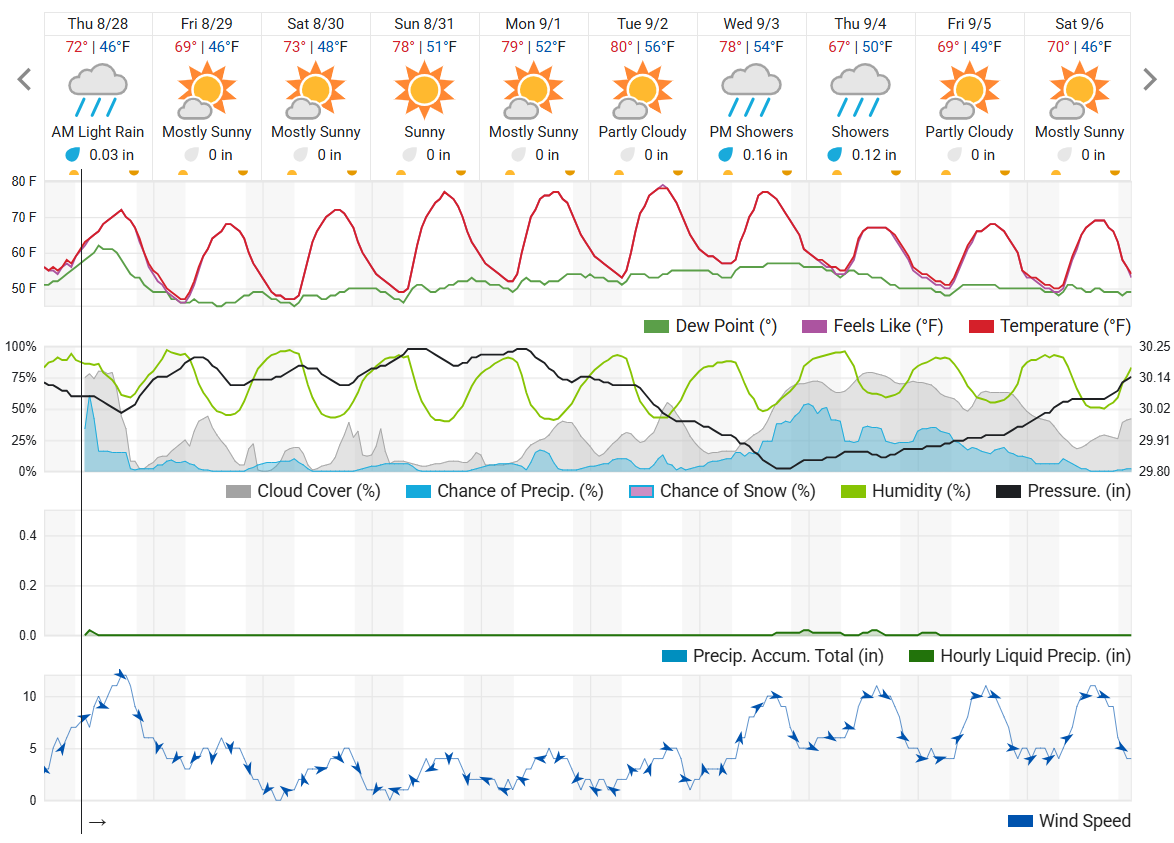
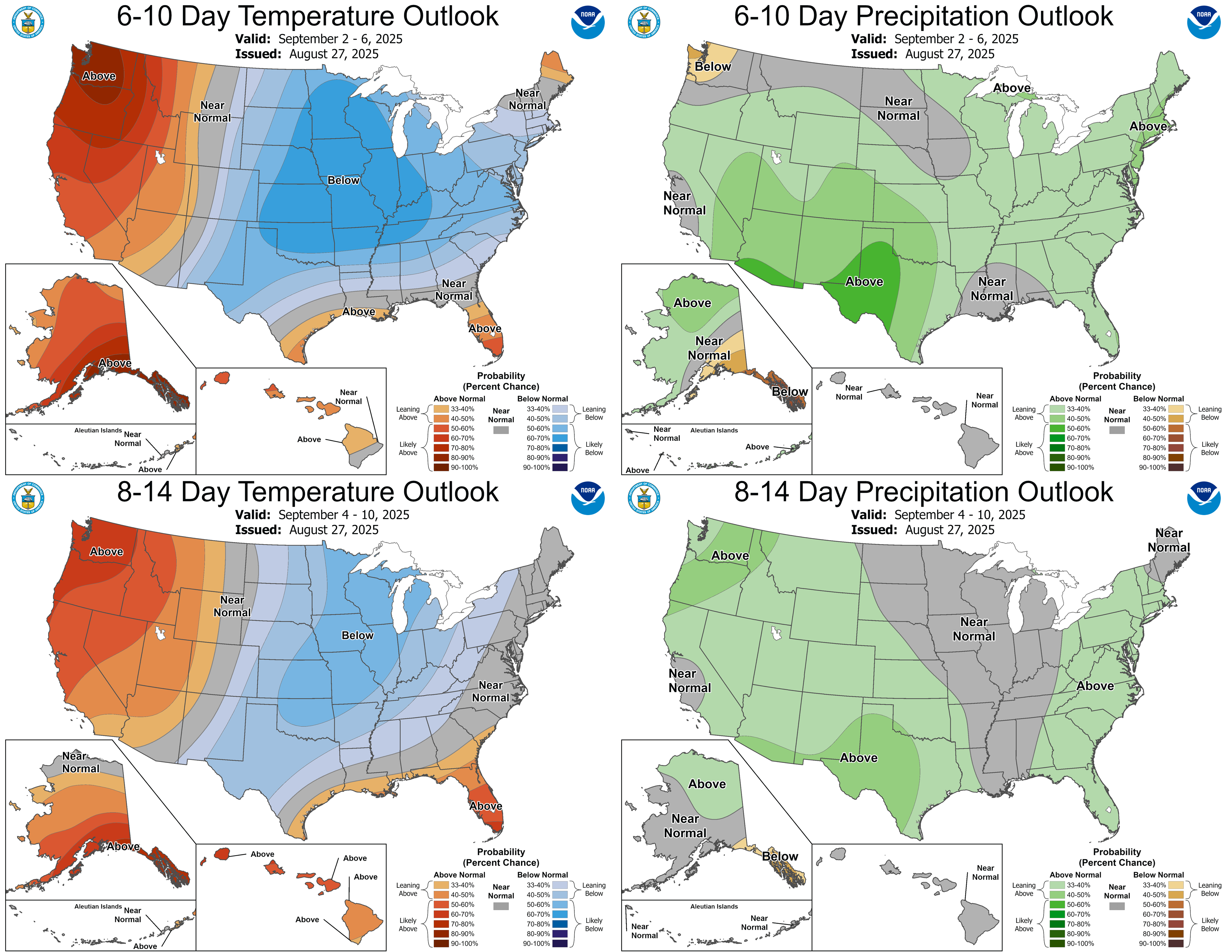
Crops and pests
Soybeans are mostly at R5, with some at R6 (full pod fill). White mold and sudden death syndrome are out in fields. Sudden death syndrome, brown stem rot and red crown rot all have similar symptoms, so don’t hesitate to send in samples for disease confirmation. Watch especially for red crown rot, which has not been confirmed in Michigan yet.
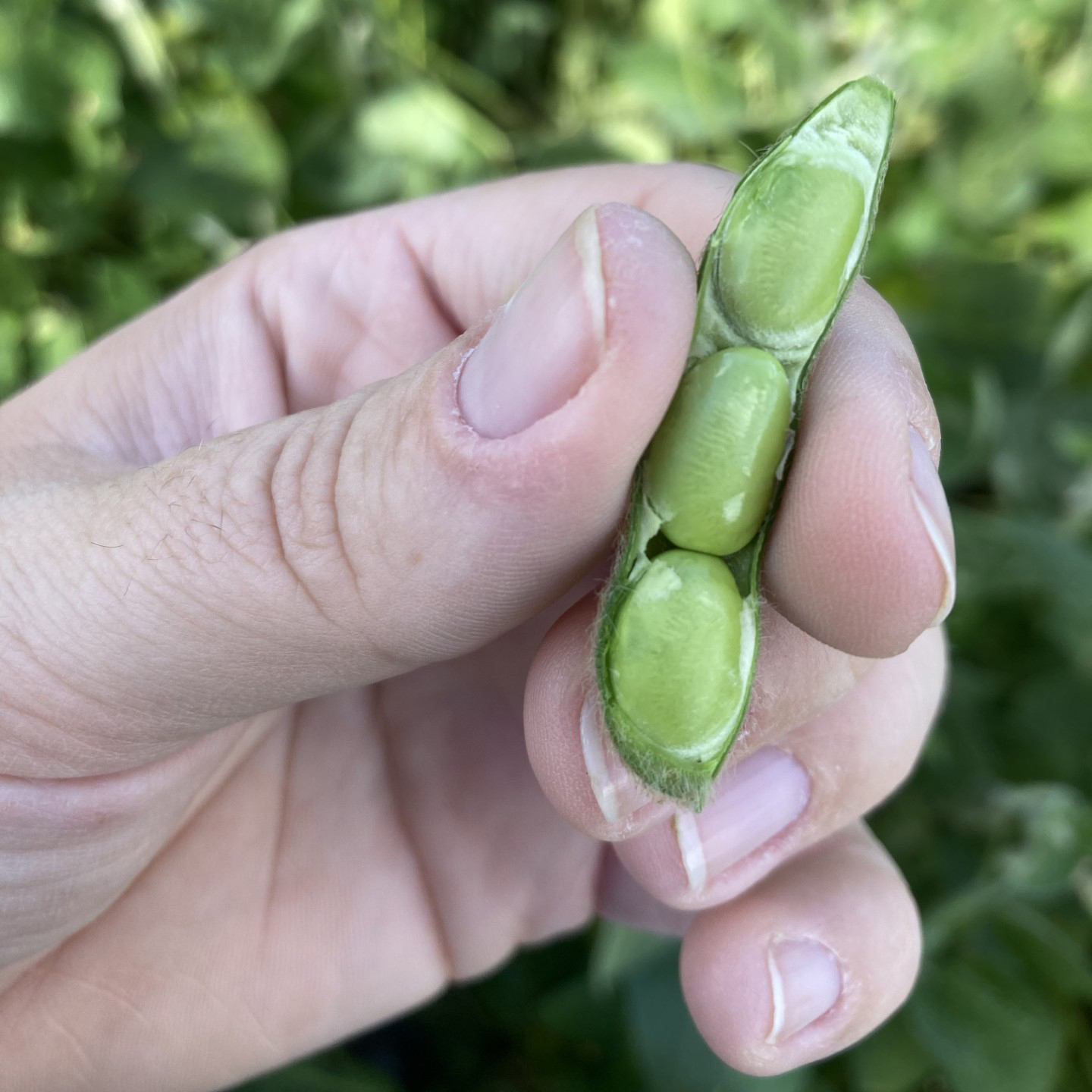
Several insects contribute to soybean defoliation at this time of year, including grasshoppers, Japanese beetles, bean leaf beetle and more. At R4-5, the action threshold is 10% insect defoliation. At R6, it’s 15% defoliation. The article “Soybean Defoliation: It Takes a lot to Really Matter!” from the Ohio State University Extension has helpful images to evaluate defoliation and even a quiz to test and train yourself.
To evaluate soybean defoliation, first find a representative plant. Then remove the two trifoliates with the most defoliation and the two trifoliates with the least defoliation. Remove the best and worst leaflets from each of those trifoliates. This should leave you with one representative leaflet from each trifoliate and four leaflets in total. Finally, rate the defoliation of the remaining leaflets to come up with overall defoliation. In most cases, soybean defoliation is below threshold and does not require action. However, check regularly to make sure that significant feeding is not occurring on the pods.
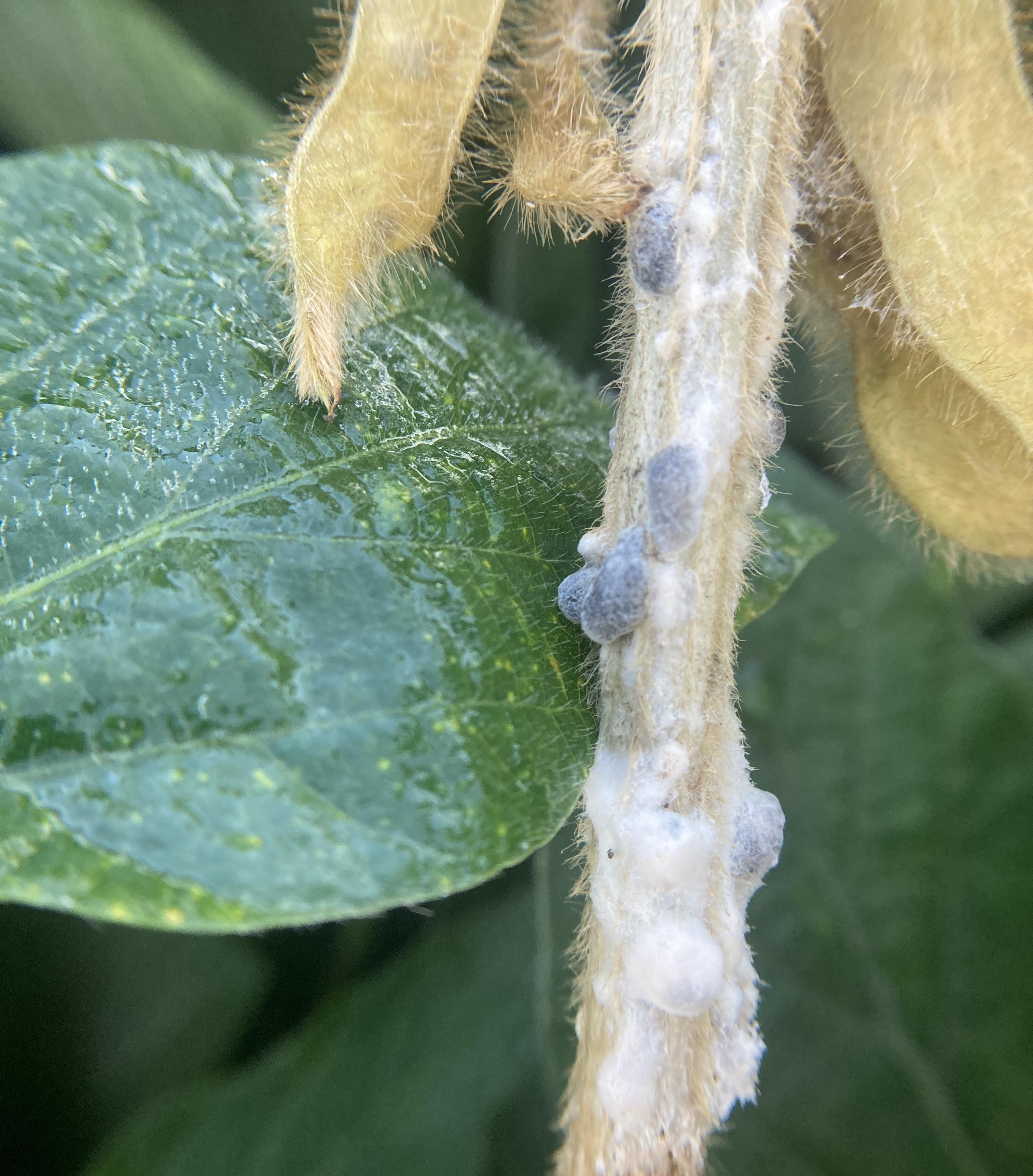
Corn is mostly at R4 (dough) or R5 (dent) and approaching R6 (black layer). Defoliation sprays began on some seed corn acres. At R5 and beyond, it is unlikely that foliar fungicide applications will provide any benefit, even if disease is present. Corn enters R6 when a black layer forms on the tip of the kernel where it attaches to the cob. Scrape the tip, and if a hard, black layer is visible, corn has reached physiological maturity.
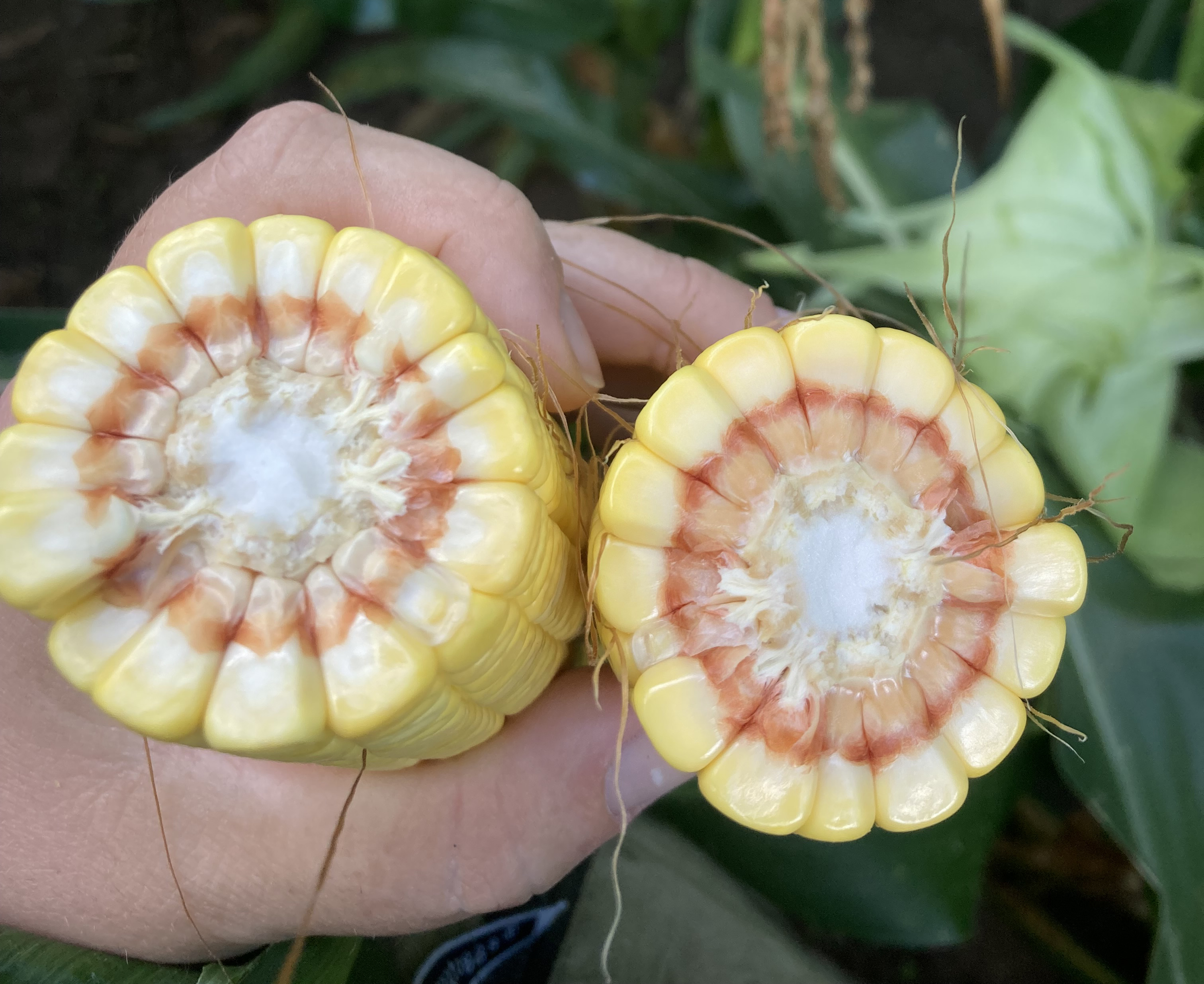
Scout for ear rots as corn is in R5. The Crop Protection Network published a helpful overview of ear rots to guide identification and scouting. Tar spot is present but hasn’t made any big moves this year. Southern rust has been confirmed in many counties throughout southwest Michigan. For more information on southern rust and how to manage it, check out the article “Southern rust an occasional threat to Michigan corn” by Michigan State University Extension field crops pathologist Martin Chilvers. Again, at this point in the season, applying fungicides for southern rust or for any foliar disease is not likely to provide a return on investment.
In potatoes, harvest and vine kill applications continued. Storage harvest will begin soon. Early harvest metrics from the Michigan Potato Industry Commission’s most recent market report indicate that yields, quality and early crop size profiles are lower than average.
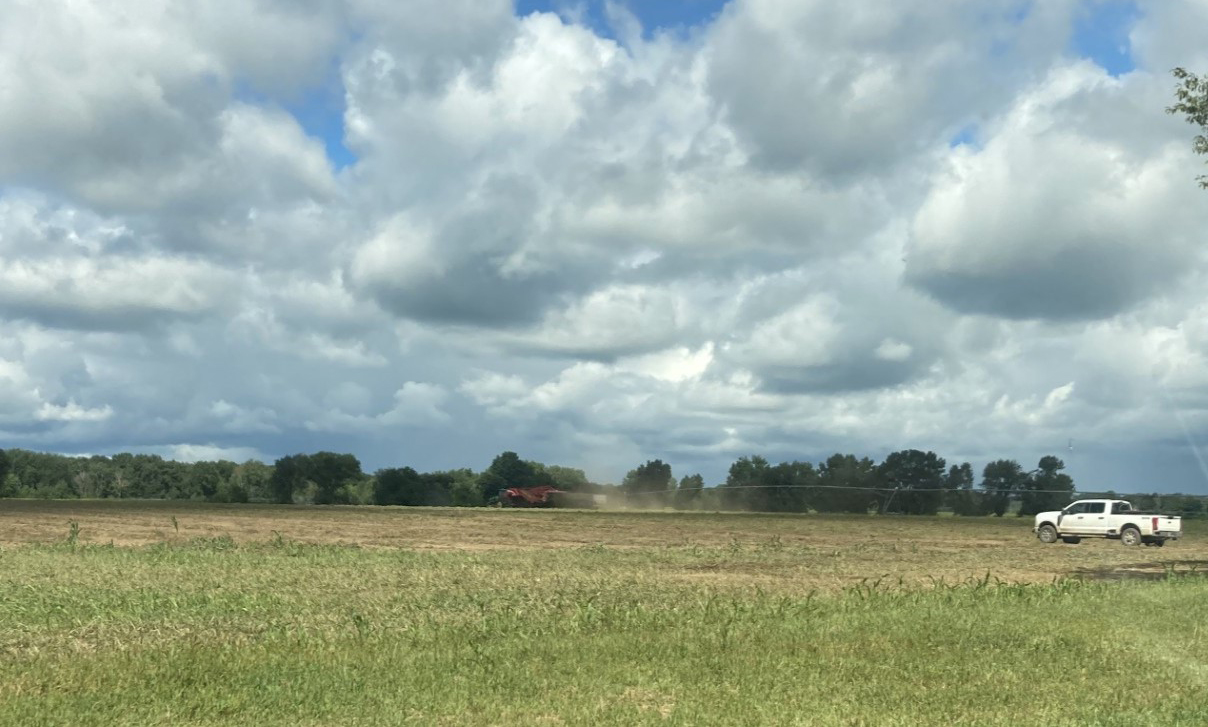
Many growers cut alfalfa and forages over the past week. Baling is ongoing, and fertilizer applications will go out soon. Potassium especially is important to help alfalfa and perennial forages overwinter well.
Weekly water use
Crop water use generally decreased this week compared to last week. In many areas, rainfall reduced the need for irrigation; however, in locations where rainfall did not fully meet crop water demands, supplemental irrigation was still necessary.
Corn is entering the dent stage, currently using about 1.27 inches of water per week in southwest Michigan. Water use will begin to decline at full dent, aligning more closely with grass-reference potential evapotranspiration.
Soybeans are in their most sensitive period for water stress between the R3 and R6 stages (from pod development through seed fill) and are also using approximately 1.27 inches of water per week. Monitor for signs of stress or disease pressure and adjust irrigation strategies accordingly.
To help reduce the risk of diseases associated with constant leaf wetness, Michigan State University Extension recommends applying larger volumes of water less frequently rather than frequent small applications. Irrigation Scheduling Tools can help estimate crop water needs and decide timing and application.
Estimated weekly crop water use for field crops in Michigan (inches/week) for the week of Aug. 25-31.
| Crop | Growth stage | Constantine | Entrican | Hart |
|---|---|---|---|---|
| Corn | Reference ET | 0.99 | 1.04 | 1.04 |
| Corn | VT, Silk, Blister, Dough, Begin Dent | 1.08 | 1.14 | 1.14 |
| Corn | Full Dent | 0.99 | 1.04 | 1.04 |
| Corn | Black Layer | 0.65 | 0.69 | 0.69 |
| Soybeans | R3 Begin Pod / R4 Full pod | 1.08 | 1.14 | 1.14 |
| Soybeans | R5 Begin seed / R6 Full seed | 1.08 | 1.14 | 1.14 |
| Soybeans | Begin Mature | 0.99 | 1.04 | 1.04 |
The table above presents estimated crop water use for various field crops across three locations in Michigan. This data helps irrigation management decisions by showcasing potential crop evapotranspiration, calculated based on reference evapotranspiration and crop coefficients for each crop growth stage. It is crucial to note that crop water use values vary across regions due to differences in weather conditions, growth stages, agronomic practices and soil properties.
When using these values for irrigation scheduling, be mindful that they assume all applied irrigation water will be utilized by the plants without any loss. Additionally, these values do not account for any precipitation that may occur during the week of calculation.
Reference evapotranspiration data was obtained from Michigan State University Enviroweather, which also offers a model for determining potential crop evapotranspiration. To access this tool, visit Enviroweather, click on "Crops," select your crop and use the potential evapotranspiration tool by choosing your nearest weather station, the latest date of interest and other crop information.
Field Crops Virtual Breakfast Series
.jpg?language_id=1)
Hot topics, presented by various MSU Extension specialists, was the topic for the MSU Extension Field Crops Virtual Breakfast this week. Emerging soybean and corn diseases were highlighted as well as herbicide resistant weeds and several other topics.
Recordings of this and all the Virtual Breakfast meetings are closed-captioned and available at the Field Crops Virtual Breakfast webpage and the MSU Extension Field Crops Team social media platforms: Facebook, Spotify, YouTube, Apple Podcasts and Twitter/X.
This work is supported by the Crop Protection and Pest Management Program [grant no 2024-70006-43569] from the USDA National Institute of Food and Agriculture. Any opinions, findings, conclusions, or recommendations expressed in this publication are those of the author(s) and do not necessarily reflect the view of the U.S. Department of Agriculture.



 Print
Print Email
Email